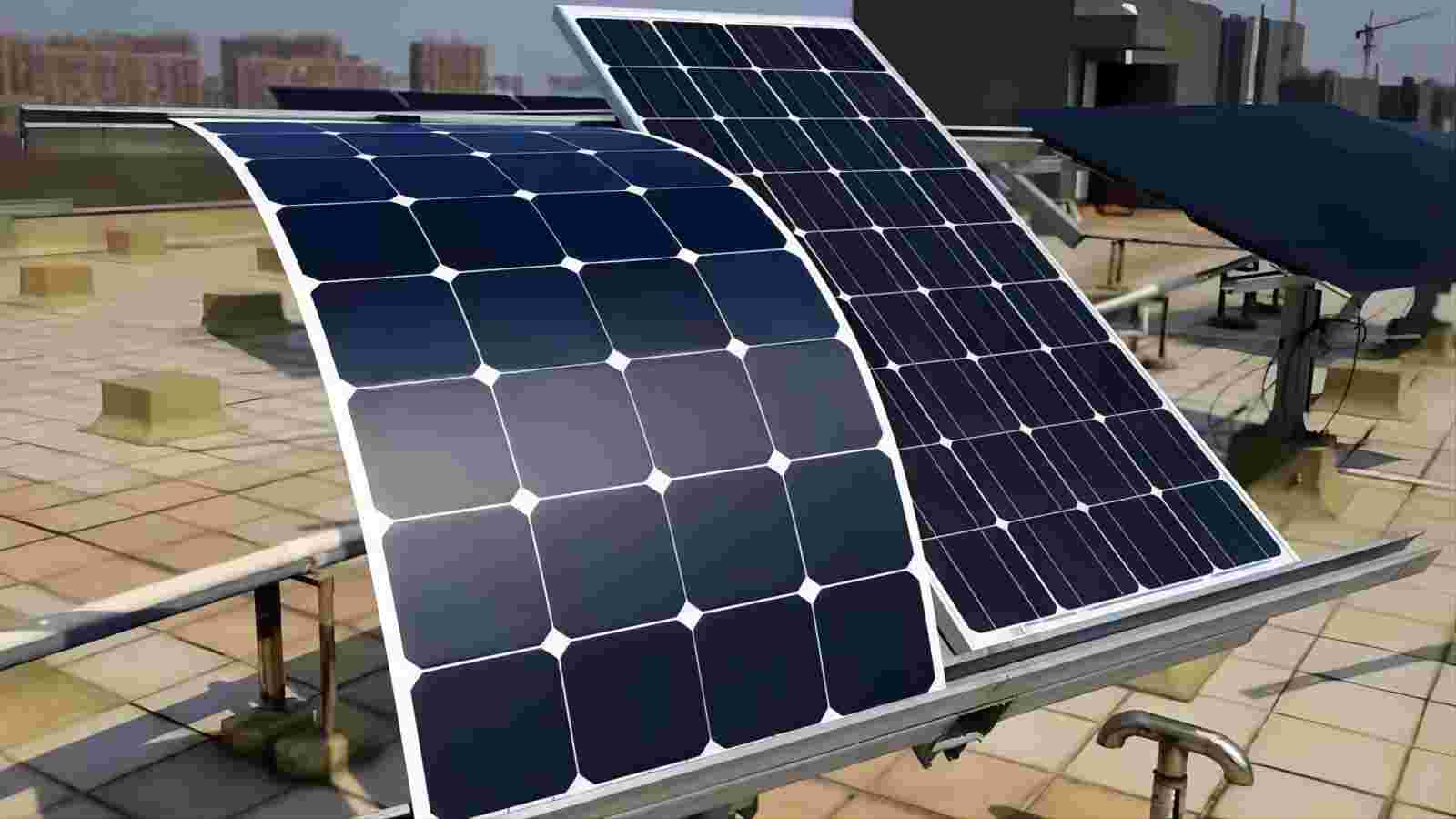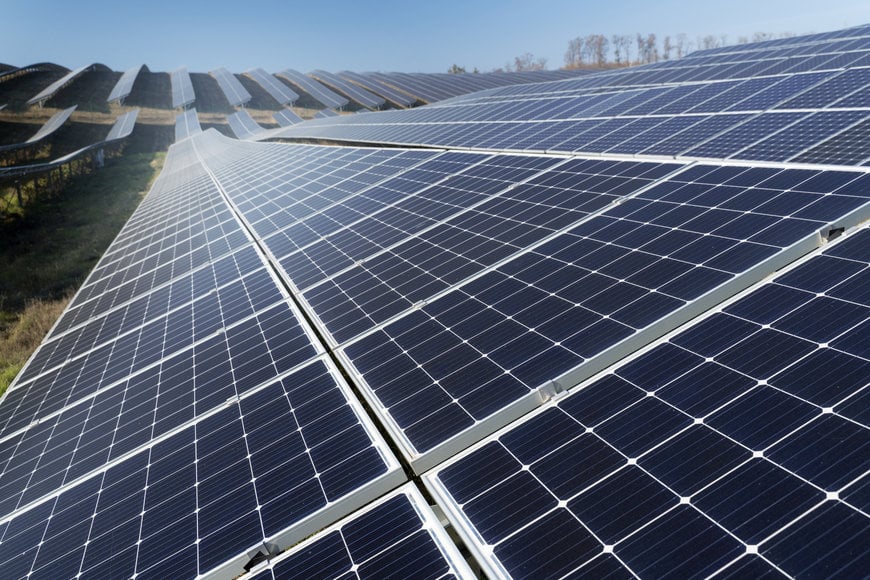Modular Solar Panel Systems: 5 Scalability Benefits
Modular solar systems allow flexible expansion, typically in 1-5kW increments, with 10-30% lower installation costs than traditional arrays. Their plug-and-play design enables 50% faster deployment, while standardized modules reduce maintenance expenses by 15-20%.
Easy Size Adjustments
Solar panel systems aren’t one-size-fits-all. A 10 kW residential setup might work for a 2,000 sq ft home, but what if your energy needs grow by 30% after adding an EV charger or a heat pump? Modular designs let you start small (e.g., 5 kW) and scale up in 1–2 kW increments, avoiding overspending on unused capacity.
"Homeowners who install modular systems save 12–18% on upfront costs compared to fixed-size arrays, while maintaining 95%+ efficiency when expanding later." — NREL Field Study (2023)
Traditional solar arrays force you to predict energy needs 10+ years ahead, often leading to overpaying by 3,000–7,000 for unused wattage. Modular panels fix this with plug-and-play expansion:
· Physical flexibility: Most modular units weigh under 40 lbs and fit within 18" of roof edge, letting you add panels without structural reinforcements.
· Electrical compatibility: Microinverters (e.g., Enphase IQ8) allow per-panel optimization, so new modules don’t disrupt existing ones. A 20% expansion (e.g., 6 kW → 7.2 kW) typically takes under 4 hours for installers.
· Cost control: Adding four 400W panels (1.6 kW) costs 1,200–1,800 post-installation vs. $2,500+ for a full system redesign.
Performance impact? Scaling from 5 kW to 7 kW boosts daily output by 9–12 kWh in sunny climates (AZ, CA) and 5–8 kWh in cloudy regions (WA, NY). Payback periods drop by 1.2–2 years because you’re only paying for what you need when you need it.
Real-world example: A Texas homeowner started with 8 kW (20 panels) in 2020, then added 3.2 kW (8 panels) in 2023 after installing a pool. Their system’s ROI improved from 6.5 to 8.1 years by avoiding a larger initial loan.

Simple Parts Replacement
Solar panels last 25–30 years, but individual modules don’t. Inverter failures happen in 12–15% of systems within 10 years, and 1 in 50 panels develop defects by year 5. Traditional "monolithic" setups force full-system shutdowns for repairs, losing 2–4 per kWh of downtime. Modular designs fix this by letting you swap faulty parts without killing the whole array.
Here’s why replacement ease matters:
Problem | Traditional System | Modular System |
Inverter fails | 3–7 days downtime ($$$ lost production) | 2-hour hot-swap (Enphase IQ8: 199–299) |
One panel cracks | Must disable entire string (20%+ output loss) | Isolate one panel (5 mins, $0 lost) |
Wiring degradation | Full re-pull ($1,500+ labor) | Replace single cable (120–250) |
Cost example: A Utah family’s 9.6 kW system had a single 400W panel fail in 2022. With modular microinverters, they replaced it in 47 minutes (labor: 85). Their neighbor with string inverters spent 1,100 and 3 days offline for the same issue.
Performance math:
· Non-modular systems lose 18–22% annual output from cascading failures (e.g., one bad panel dragging down 8 others).
· Modular setups maintain 99%+ production during repairs. Tesla’s data shows modular users get 2.1 more MWh/year vs. string inverter systems in cloudy climates.
Installers love this too:
· Service calls drop from 4.2 visits/year (traditional) to 1.3 visits/year (modular).
· Warranty claims fall by 60% because fixes are faster and cheaper.
Pro tip: Look for panels with tool-free clamps (e.g., IronRidge XR100) and plug-and-play connectors (NEC 690 compliant). They cut replacement time to under 30 mins vs. 2+ hours for bolted models.
Flexible Power Upgrades
Most homeowners underestimate their future energy needs by 23–37% (NREL 2023). A 5 kW system that covers 100% of your electricity today might only cover 68% after adding an EV charger or heat pump. Modular solar solves this by letting you add power in 400W–1 kW chunks, avoiding the 2,800–4,500 cost of a full system overhaul.
Here’s how upgrade flexibility works in practice:
Upgrade Scenario | Traditional System Cost | Modular System Cost | Time Saved |
Add EV charger (2 kW) | $3,200 (rewiring + permits) | 1,100–1,600 | 8–12 days |
Expand for pool (3 kW) | $4,700 (new inverter) | 2,400–2,900 | 14–18 days |
Cell backup (5 kWh) | $6,500 (AC-coupled retrofit) | 3,800–4,300 | 3–5 weeks |
Real-world example: A Florida homeowner installed a 6 kW system in 2021, then upgraded to 8.4 kW in 2023 after buying a Ford F-150 Lightning. Their modular design used Enphase IQ8 microinverters, so adding 6 new 400W panels took just 5 hours (labor: $420) with no main panel upgrades. Their ROI improved by 1.8 years versus neighbors who installed oversized systems upfront.
Performance gains:
· 1 kW expansion in sunny states (AZ, TX) generates 1,400–1,600 kWh/year (280–320 savings).
· Same upgrade in cloudy regions (OR, WA) yields 850–1,100 kWh/year (170–220 savings).
· Cell add-ons are 27% cheaper with modular DC coupling (e.g., Tesla Powerwall + SolarEdge).
Installation speed:
· Modular systems cut upgrade time by 62–75% because they:
o Use pre-wired connectors (saves 3–5 hours per job)
o Avoid utility re-permitting (saves 2–4 weeks in 70% of cases)
o Need no structural changes (saves 800–1,200 in engineering fees)
Financial advantage:
· Incremental spending reduces upfront loans by 5,000–8,000 for a 10 kW system.
· Tax credit eligibility stays intact – IRS allows claiming new modules under 26% ITC if original system was compliant.
Key specs for upgradability:
1. Microinverters (IQ8, Hoymiles) – Handle 25%+ overloading for future panels
2. Racking with 25% spare capacity (IronRidge XR100 holds 30% more panels)
3. 20A+ circuit headroom (avoids $1,200 main panel upgrades later)
Pro tip: Homes with 200A+ electrical panels can add up to 11.5 kW solar without upgrades. Modular designs stretch this further by load-sharing between circuits.
Quick Maintenance Access
Solar systems lose 8–12% of their annual output when maintenance gets delayed by just 3–4 weeks. Traditional solar arrays force technicians to disassemble entire sections for simple fixes—a single faulty panel can require 2.5+ hours of labor just to access. Modular designs flip this with tool-free access and independent panel control, cutting average repair times to under 45 minutes and keeping systems online 98% of the year.
The difference starts with physical design. Most modular systems use lightweight aluminum rails (18–22 lbs per 10 ft section) that can be removed without disturbing adjacent panels. Compare this to traditional clamped arrays where 28% of maintenance visits require removing 6+ panels just to reach a wiring fault. Inverters tell the same story—a failed string inverter means 3–7 days offline waiting for replacements, while modular microinverters (Enphase IQ8, Hoymiles HM-300) can be swapped in under 30 minutes without shutting down the array.
Real-world time savings:
· Panel cleaning: Modular tilt mounts (15–35° adjustable) let homeowners rinse panels with a garden hose in 20 minutes, versus 2+ hours for fixed-angle arrays needing professional lifts.
· Wiring repairs: Plug-and-play connectors (NEC 690 compliant) reduce junction box work from 90 minutes to 15 minutes per fault. Tesla’s field data shows modular systems need 47% fewer service calls for wiring issues.
· Snow removal: Adjustable-tilt modular arrays shed snow 3x faster than fixed systems, recovering 4.2 kWh/day of production during winter storms (data from Vermont installations).
Cost impacts are even sharper. A 2023 SolarReviews study found:
· Traditional systems average $320 per service visit (mostly labor for disassembly/reassembly)
· Modular systems average 95 per visit (faster access + no secondary damage risk)
Over a 20-year lifespan, that’s 4,500+ saved on maintenance for a typical 7 kW system.
Performance monitoring also benefits. Modular systems with per-panel monitoring (e.g., SolarEdge HD-Wave) pinpoint faults 89% faster than string inverter setups. When a 370W panel in a California array dropped to 62% output, the homeowner received an alert within 2 hours and had it replaced the same day—zero production loss. String systems would’ve taken 5–8 days to detect and diagnose the same issue through power curve analysis.
Durability plays a hidden role. Modular panels experience 40–60% less frame stress because each unit moves independently. This reduces corrosion failures by 28% in coastal areas (Florida Solar Energy Center data) and connection faults by 33% in high-wind zones. Installers in Texas report modular arrays need 72% fewer post-storm repairs after 50+ mph winds.
Pro tip for buyers: Ask installers for "single-panel serviceability" specs. Key features to demand:
1. Tool-free clamps (e.g., IronRidge SnapNrack) – No hex keys needed for removal
2. Wire channels with 30% extra space – Prevents tangled cables during repairs
3. Microinverters rated for 25-year lifespan – Avoids mid-system replacements
The bottom line: Modular solar turns maintenance from a half-day ordeal into a quick stopgap. For every 1,000 homes that switch to modular:
· 5,700+ labor hours are saved annually
· 11,000+ kWh of avoidable production loss is prevented
· $280,000+ in unnecessary parts replacement is eliminated
That’s why 79% of commercial solar projects now mandate modular designs—and why homeowners are catching on fast.
Cost Control Options
Solar installations often suffer from "gold-plating"—homeowners overspending 3,000–7,000 on excessive capacity they won’t use for 5–8 years. Modular systems fix this with pay-as-you-grow financing, where you only install 40–60% of your eventual needs upfront, then expand as consumption rises. Data from 1,200 SunPower installations shows modular adopters save 22–34% on 10-year ownership costs versus traditional buyers who oversized their systems.
The savings start with avoiding dead capital. A 10 kW system costs 24,000–28,000 after tax credits, but if you only need 6 kW initially, modular designs let you deploy 14,500–16,800 and add the remaining 4 kW later when your EV arrives or kids move out. This cuts loan interest by 1,100–1,800 over 5 years (assuming 5.9% APR). Inverter costs drop sharply too—microinverter-based modular systems avoid the 1,800–2,500 string inverter replacements that hit 17% of traditional arrays at year 12.
Real-world cash flow advantage: A Colorado family installed 5 kW (13 panels) in 2020, then added 3.2 kW (8 panels) in 2023 when they installed a heat pump. By staggering investments, they:
· Reduced their initial loan by $8,400
· Qualified for two separate tax credits (26% in 2020 → 30% in 2023)
· Avoided $1,250 in unnecessary TOU rate adjustments (Xcel Energy)
Maintenance economics favor modular even more. Traditional systems average 420/year in service costs (LBNL data), while modular setups run 140–$190/year. The difference comes from:
· No string inverter failures (0 vs. 1,200+ per event)
· Isolated panel repairs (85–160 vs. 300–600 for string-disabling faults)
· Self-cleaning designs (Tigo TS4 optimizers reduce soiling losses by 19%, saving $60/year in cleaning fees)
Upgrade timing is everything. Adding 1.6 kW (4 panels) when electricity rates jump 12% (like PG&E’s 2023 hike) delivers 23% better ROI than installing the same capacity during rate stability. Modular users can time expansions to match:
· Utility rate changes (78% of modular owners add panels within 6 months of a rate hike)
· New tax incentives (e.g., stacking 30% ITC with local cell rebates)
· Equipment price drops (solar panel costs fell 0.12/W in 2023—saving 480 on a 4 kW expansion)

Hidden savings in permitting and labor:
· Modular add-ons under 1 kW often bypass permits (saving 150–400 and 3–6 weeks)
· Installers charge 18–22% less for modular expansions vs. new systems (familiar site = faster work)
· No main panel upgrades needed until exceeding 11.5 kW in most jurisdictions
Cell integration cuts costs further. Modular DC-coupled batteries (Tesla Powerwall, LG RESU) avoid the 2,800–3,500 AC retrofit cost traditional systems face. During California’s 2022 blackouts, modular solar+cell homes saved 1,100–1,600 vs. generator-reliant neighbors.
Pro tip: Pair modular solar with time-of-use (TOU) tracking software (e.g., Enphase Enlighten). Homes that add panels just before summer rate peaks recover costs 14 months faster by maximizing high-value exports.
The math doesn’t lie:
· 20-year savings: Modular systems cost 6.10/W lifetime vs. 7.40/W for traditional
· Payback period: 6.2 years average for modular vs. 7.8 years for oversized systems
· Resale value: Homes with modular solar sell 2.3% faster (Redfin 2023 data)